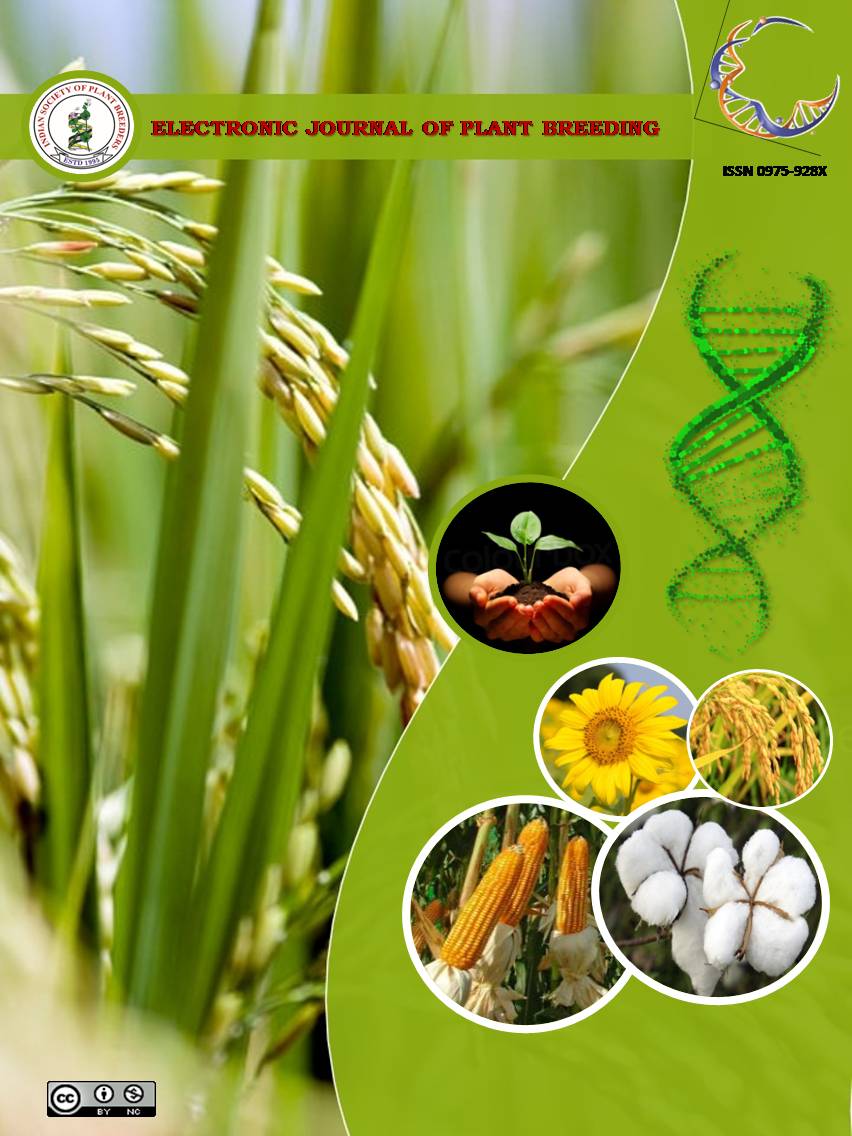Genetic analysis for yield and yield attributing traits in pigeonpea [Cajanas cajan (L.) Millsp.]
Abstract
The basic information on gene action and inheritance of quantitative traits, which is necessary to develop future breeding programme, is not widely studied in pigeonpea because it is a long duration crop and widely affected by stresses (biotic & abiotic). Therefore, present study was conducted among six generations in five pigeonpea crosses to know significance of additive-dominance model, gene action involved in inheritance of quantitative traits. These six population (P1, P2, F1, F2, BC1 and BC2) of five cross combinations of pigeonpea were studied during Kharif, 2014-15 for plant height, number of primary and secondary branches, pods plant-1, pod length, seeds pod-1, 100-seed weight and Seed yield plant-1.Significant deviation of scale(s) (A, B, C & D) from zero in all the crosses for most of the traits were evidence of presence of epistasis and hence further subjected to six parameter model to estimate the main gene effects (additive [ ] and dominance ) and their digenic interactions (additive × additive , additive × dominance and dominance × dominance ). The estimates of six parameter model revealed that both additive and dominant gene effects were important in all the crosses for almost all the traits. However, the relative contribution of dominant gene effects was much higher than additive gene effects for plant height, pods plant-1, seed pod-1 and seed yield plant-1. Higher frequency of duplicate type of epistasis also confirms the prevalence of dominance gene effects for above traits except for seed yieldplant-1.

It is certified that:
- The corresponding author is fully responsible for any disputes arising due to the publication of his/her manuscript.
- The article has been seen by all the authors who are satisfied with its form and content.
- The sequence of names of authors in the by-line is as per their relative contribution to this experiment, giving due credit to all scientists who made notable contribution to it.
- All the authors fully understand that inclusion of any other co-authors or exclusion of any co-authors is not possible once the article has been submitted to the journal.
- The corresponding author takes full responsibility for this article.
- The address of the organization where the research was conducted is given.
- The article is exclusive for this journal, and the results reported here have not been sent (and will not be sent during its consideration by this journal) for publication in any other journal.
- Authors agree to abide by the objective comments of referees and do agree to modify the article into a short note as per the recommendation, for publication in the Electronic Journal of Plant Breeding.
- If published in Electronic Journal of Plant Breeding, the copyright of this article would vest with the Indian Society of Plant Breeders, who will have the right to enter into any agreement with any organization in India or abroad engaged in reprography, photocopying, storage and dissemination of information contained in it, and neither we nor our legal heirs will have any claims on royalty.


